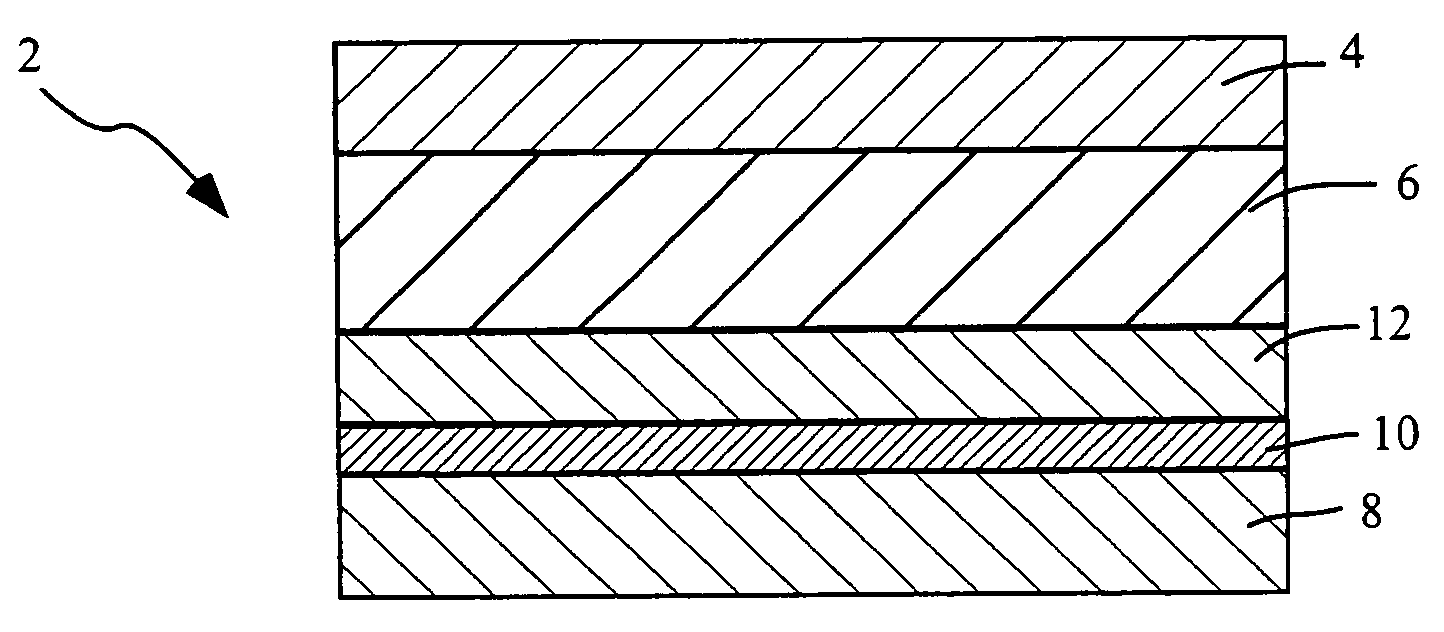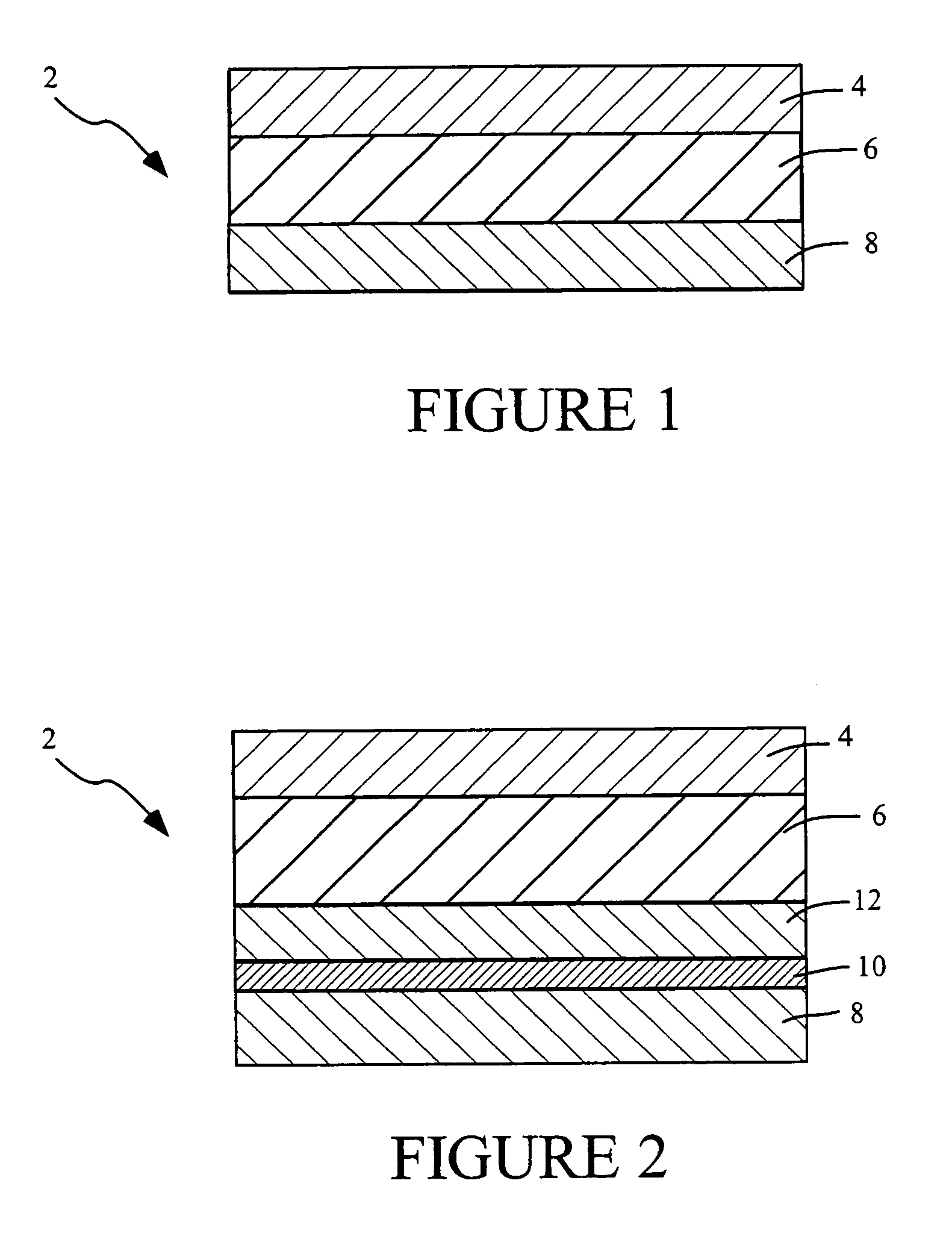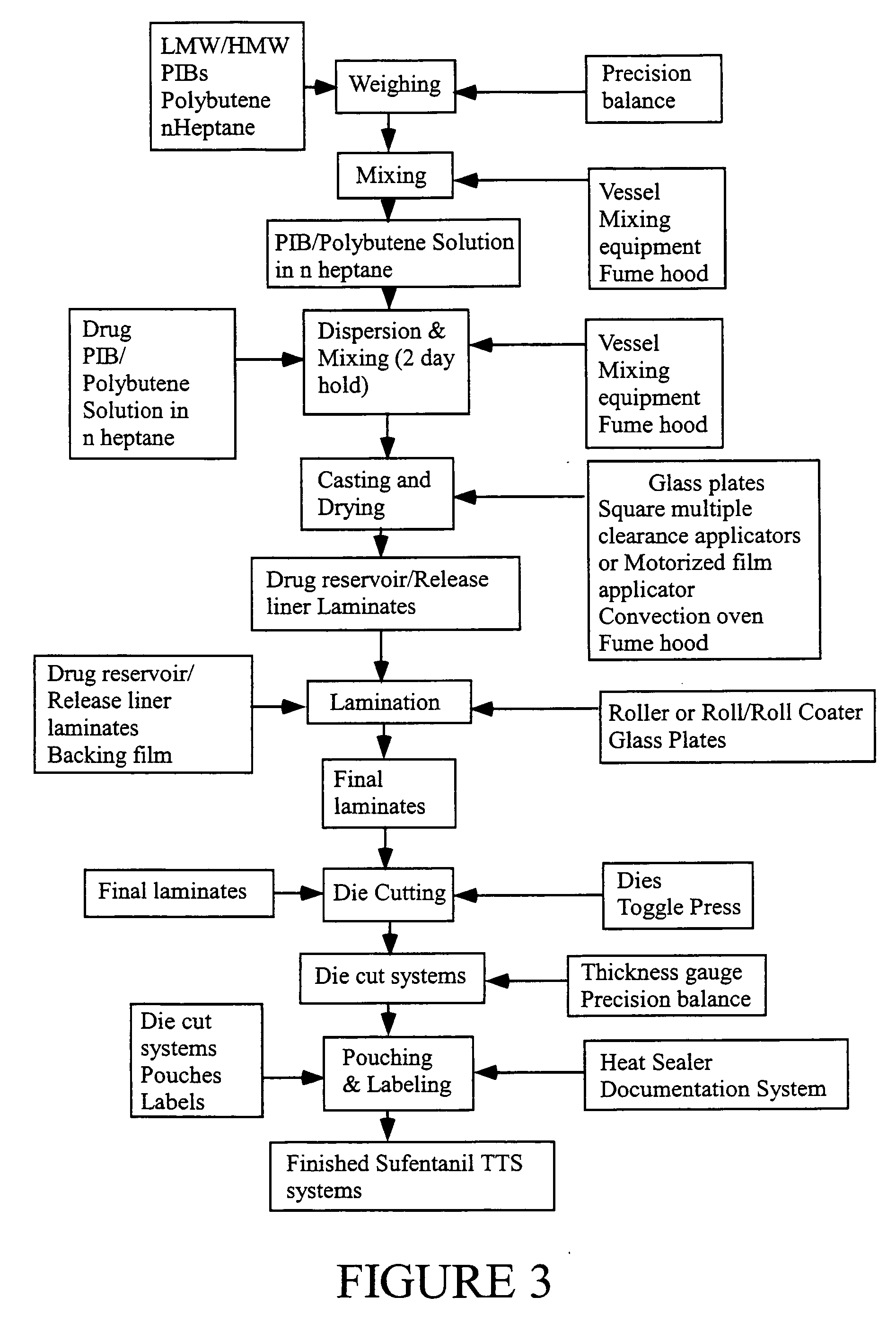Transdermal delivery systems
a delivery system and transdermal technology, applied in the direction of bandages, biocide, drug compositions, etc., can solve the problems of opiate tolerance, dependence, constipation, etc., and achieve the effect of preferential pharmacological release characteristics and profiles, and easy construction
- Summary
- Abstract
- Description
- Claims
- Application Information
AI Technical Summary
Benefits of technology
Problems solved by technology
Method used
Image
Examples
example 1
In Vitro Sufentanil Flux Through Human Skin
[0113]In-vitro permeation sufentanil flux studies were conducted with human skin from cadaver donors (dermatomed full thickness). Thigh skin from sixteen different donors was used in the experiments, with a minimum of 5 replicate skin samples per donor (total n=82). Prior to the in vitro skin drug flux experiment, the skin tissue was examined under a magnifying glass for any defects such as pinholes. Excluding any damaged areas, the intact skin areas were cut into 1-inch circles. Monolithic adhesive matrix patches using a high molecular weight / low molecular weight polyisobutylene (PIB) blend for the adhesive was prepared as described above. In the tests, a sufentanil transdermal delivery system was placed on the stratum corneum side of the pre-cut skin sample. Then, the assembly of system and pre-cut skin specimen was positioned on the top edge of the receptor side of a modified Franz cell with the dermal side of the skin tissue facing the ...
example 2
In Vitro Sufentanil Flux From Transdermal Delivery System
[0114]A sufentanil transdermal delivery system having a drug releasing interface surface area of 1 cm2 or 1.42 cm2 Monolithic adhesive matrix patches, using a high molecular weight / low molecular weight polyisobutylene (PIB) blend for the adhesive and containing sufentanil were prepared as described above.
[0115]In the test, the sufentanil transdermal delivery system was held adhesively on a stainless steel holder, having the drug releasing surface of the patch facing up and immersable in release medium, and positioned at the center of a USP Dissolution Apparatus II with 1 L vessels. Accurately, 600 mL of degassed 0.005N sodium phosphate, pH 5.5 buffer solution was placed in the vessels and maintained at 32° C. while the paddle speed was maintained at 50 rpm during the dissolution experiment.
[0116]At the preset time intervals of 1, 2, 4, 8, 12, 16, 24, 36, and 48 hours, 1 mL portions of the dissolution medium was withdrawn from ...
example 3
Preparation of Sufentanil Transdermal Delivery Systems
[0127]A series of 3-day and 7-day monolithic adhesive matrix patches, using either a high molecular weight / low molecular weight polyisobutylene (PIB) blend, or acrylic polymers for the adhesive are prepared as follows. The systems include from 1 to 4 mg of sufentanil and are prepared to deliver in human subjects, depending on the system size, from about 90 to 360 μg sufentanil per day, from systems having a drug releasing interface surface area of from 2 to 8 cm2, respectively. Each system is individually packaged in an aluminum foil pouch carrying an appropriate pharmaceutical label.
[0128]The components for the 7-day systems are listed in Table 4 below.
TABLE 4PrimarySecondarymaterial / Regulatorymaterial / RegulatoryComponentsVendorStatusVendorStatusNotesBacking FilmScotchpakDMF # 2610ScotchpakDMF #1109 - laminate of1109 Backing9733 Backing14291polyethylene and(3M)(3M)aluminum vapor coatedpolyester.9733 - laminate ofpolyester andpol...
PUM
| Property | Measurement | Unit |
|---|---|---|
| surface area | aaaaa | aaaaa |
| thickness | aaaaa | aaaaa |
| volume | aaaaa | aaaaa |
Abstract
Description
Claims
Application Information
 Login to View More
Login to View More - R&D
- Intellectual Property
- Life Sciences
- Materials
- Tech Scout
- Unparalleled Data Quality
- Higher Quality Content
- 60% Fewer Hallucinations
Browse by: Latest US Patents, China's latest patents, Technical Efficacy Thesaurus, Application Domain, Technology Topic, Popular Technical Reports.
© 2025 PatSnap. All rights reserved.Legal|Privacy policy|Modern Slavery Act Transparency Statement|Sitemap|About US| Contact US: help@patsnap.com



